10.3: Sources of Vitamins and Minerals
- Page ID
- 44000
\( \newcommand{\vecs}[1]{\overset { \scriptstyle \rightharpoonup} {\mathbf{#1}} } \)
\( \newcommand{\vecd}[1]{\overset{-\!-\!\rightharpoonup}{\vphantom{a}\smash {#1}}} \)
\( \newcommand{\id}{\mathrm{id}}\) \( \newcommand{\Span}{\mathrm{span}}\)
( \newcommand{\kernel}{\mathrm{null}\,}\) \( \newcommand{\range}{\mathrm{range}\,}\)
\( \newcommand{\RealPart}{\mathrm{Re}}\) \( \newcommand{\ImaginaryPart}{\mathrm{Im}}\)
\( \newcommand{\Argument}{\mathrm{Arg}}\) \( \newcommand{\norm}[1]{\| #1 \|}\)
\( \newcommand{\inner}[2]{\langle #1, #2 \rangle}\)
\( \newcommand{\Span}{\mathrm{span}}\)
\( \newcommand{\id}{\mathrm{id}}\)
\( \newcommand{\Span}{\mathrm{span}}\)
\( \newcommand{\kernel}{\mathrm{null}\,}\)
\( \newcommand{\range}{\mathrm{range}\,}\)
\( \newcommand{\RealPart}{\mathrm{Re}}\)
\( \newcommand{\ImaginaryPart}{\mathrm{Im}}\)
\( \newcommand{\Argument}{\mathrm{Arg}}\)
\( \newcommand{\norm}[1]{\| #1 \|}\)
\( \newcommand{\inner}[2]{\langle #1, #2 \rangle}\)
\( \newcommand{\Span}{\mathrm{span}}\) \( \newcommand{\AA}{\unicode[.8,0]{x212B}}\)
\( \newcommand{\vectorA}[1]{\vec{#1}} % arrow\)
\( \newcommand{\vectorAt}[1]{\vec{\text{#1}}} % arrow\)
\( \newcommand{\vectorB}[1]{\overset { \scriptstyle \rightharpoonup} {\mathbf{#1}} } \)
\( \newcommand{\vectorC}[1]{\textbf{#1}} \)
\( \newcommand{\vectorD}[1]{\overrightarrow{#1}} \)
\( \newcommand{\vectorDt}[1]{\overrightarrow{\text{#1}}} \)
\( \newcommand{\vectE}[1]{\overset{-\!-\!\rightharpoonup}{\vphantom{a}\smash{\mathbf {#1}}}} \)
\( \newcommand{\vecs}[1]{\overset { \scriptstyle \rightharpoonup} {\mathbf{#1}} } \)
\( \newcommand{\vecd}[1]{\overset{-\!-\!\rightharpoonup}{\vphantom{a}\smash {#1}}} \)
\(\newcommand{\avec}{\mathbf a}\) \(\newcommand{\bvec}{\mathbf b}\) \(\newcommand{\cvec}{\mathbf c}\) \(\newcommand{\dvec}{\mathbf d}\) \(\newcommand{\dtil}{\widetilde{\mathbf d}}\) \(\newcommand{\evec}{\mathbf e}\) \(\newcommand{\fvec}{\mathbf f}\) \(\newcommand{\nvec}{\mathbf n}\) \(\newcommand{\pvec}{\mathbf p}\) \(\newcommand{\qvec}{\mathbf q}\) \(\newcommand{\svec}{\mathbf s}\) \(\newcommand{\tvec}{\mathbf t}\) \(\newcommand{\uvec}{\mathbf u}\) \(\newcommand{\vvec}{\mathbf v}\) \(\newcommand{\wvec}{\mathbf w}\) \(\newcommand{\xvec}{\mathbf x}\) \(\newcommand{\yvec}{\mathbf y}\) \(\newcommand{\zvec}{\mathbf z}\) \(\newcommand{\rvec}{\mathbf r}\) \(\newcommand{\mvec}{\mathbf m}\) \(\newcommand{\zerovec}{\mathbf 0}\) \(\newcommand{\onevec}{\mathbf 1}\) \(\newcommand{\real}{\mathbb R}\) \(\newcommand{\twovec}[2]{\left[\begin{array}{r}#1 \\ #2 \end{array}\right]}\) \(\newcommand{\ctwovec}[2]{\left[\begin{array}{c}#1 \\ #2 \end{array}\right]}\) \(\newcommand{\threevec}[3]{\left[\begin{array}{r}#1 \\ #2 \\ #3 \end{array}\right]}\) \(\newcommand{\cthreevec}[3]{\left[\begin{array}{c}#1 \\ #2 \\ #3 \end{array}\right]}\) \(\newcommand{\fourvec}[4]{\left[\begin{array}{r}#1 \\ #2 \\ #3 \\ #4 \end{array}\right]}\) \(\newcommand{\cfourvec}[4]{\left[\begin{array}{c}#1 \\ #2 \\ #3 \\ #4 \end{array}\right]}\) \(\newcommand{\fivevec}[5]{\left[\begin{array}{r}#1 \\ #2 \\ #3 \\ #4 \\ #5 \\ \end{array}\right]}\) \(\newcommand{\cfivevec}[5]{\left[\begin{array}{c}#1 \\ #2 \\ #3 \\ #4 \\ #5 \\ \end{array}\right]}\) \(\newcommand{\mattwo}[4]{\left[\begin{array}{rr}#1 \amp #2 \\ #3 \amp #4 \\ \end{array}\right]}\) \(\newcommand{\laspan}[1]{\text{Span}\{#1\}}\) \(\newcommand{\bcal}{\cal B}\) \(\newcommand{\ccal}{\cal C}\) \(\newcommand{\scal}{\cal S}\) \(\newcommand{\wcal}{\cal W}\) \(\newcommand{\ecal}{\cal E}\) \(\newcommand{\coords}[2]{\left\{#1\right\}_{#2}}\) \(\newcommand{\gray}[1]{\color{gray}{#1}}\) \(\newcommand{\lgray}[1]{\color{lightgray}{#1}}\) \(\newcommand{\rank}{\operatorname{rank}}\) \(\newcommand{\row}{\text{Row}}\) \(\newcommand{\col}{\text{Col}}\) \(\renewcommand{\row}{\text{Row}}\) \(\newcommand{\nul}{\text{Nul}}\) \(\newcommand{\var}{\text{Var}}\) \(\newcommand{\corr}{\text{corr}}\) \(\newcommand{\len}[1]{\left|#1\right|}\) \(\newcommand{\bbar}{\overline{\bvec}}\) \(\newcommand{\bhat}{\widehat{\bvec}}\) \(\newcommand{\bperp}{\bvec^\perp}\) \(\newcommand{\xhat}{\widehat{\xvec}}\) \(\newcommand{\vhat}{\widehat{\vvec}}\) \(\newcommand{\uhat}{\widehat{\uvec}}\) \(\newcommand{\what}{\widehat{\wvec}}\) \(\newcommand{\Sighat}{\widehat{\Sigma}}\) \(\newcommand{\lt}{<}\) \(\newcommand{\gt}{>}\) \(\newcommand{\amp}{&}\) \(\definecolor{fillinmathshade}{gray}{0.9}\)Vitamins and Minerals in Food
Eating a variety of foods from all food groups is the best way to ensure you are getting all the micronutrients needed for a healthy diet. Each food group lends itself to specific vitamins and minerals. Keep in mind that whole foods (e.g., fresh fruits and vegetables, whole grains, lean meats, and low-fat dairy foods such as milk and cheese) contain more vitamins and minerals than their processed counterparts. A whole baked potato contains more vitamin C, folate, and potassium than a potato that is cut, soaked, and fried to make a french fry.
| Food Group | Vitamins Provided | Minerals Provided |
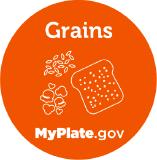 |
|
|
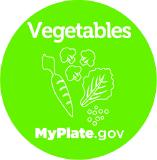 |
|
|
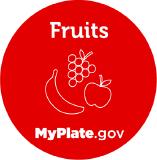 |
|
|
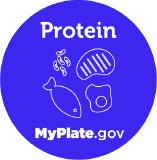 |
|
|
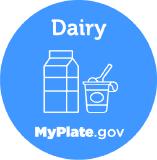 |
|
|
Effects of Processing on Nutrient Content in Foods
The nutrient content of foods is typically highest when foods are allowed to ripen on the plant, allowing the plant to fully develop the nutrients and phytochemicals it needs to sustain life. Harvesting plants in the peak state of ripeness helps to ensure maximum vitamin and mineral content, and consuming freshly-picked or harvested produce usually maximizes how much of those nutrients make it into our bodies to be put to use by cells. But not all foods can be consumed immediately after harvest. How foods are handled, processed, stored, and prepared can impact how much of that peak nutrient level remains in the food.
Processing of food is an important step in our food supply. Harvesting and transporting foods to communities increases access to a variety of foods. Preservation techniques like canning and freezing extend the shelf life of foods and increase their availability outside of their peak harvest season. In fact, because fresh foods can deteriorate rapidly, food processing techniques may result in better nutrient retention over time when compared to fresh items. However, some vitamins are more stable than others, and the amount retained depends on the specific vitamin and the processing technique. Water-soluble vitamins are the most susceptible to the effects of processing, though other nutrients can be impacted as well.
|
Method of Processing |
Effect on Nutrient Retention |
How to Minimize Nutrient Loss |
|
Air exposure and time |
Enzymes present in foods and exposure to air can destroy nutrients, because as soon as the food is harvested, the food begins to slowly decompose. |
Purchase fresh items in quantities that can be used as soon as possible. Cut up foods only when ready to use. Buy local produce to cut back on transport time and air exposure. |
|
Temperature |
Cooking helps kill bacteria, makes foods more appealing, and in some situations improves bioavailability of nutrients. But high temperatures for prolonged amounts of time can destroy some vitamins. |
Use fast cooking methods like microwaving, steaming, or stir-frying. |
|
Water |
Minerals and water-soluble vitamins can leach into the water. |
Don’t soak produce in water. Limit the amount of water used to cook foods (e.g., steam vegetables rather than boil them). Use cooking water in food preparation. |
|
Canning |
High temperatures may be used, which can destroy water-soluble vitamins, but commercial techniques usually use rapid heating, which helps to reduce nutrient loss. |
Choose a variety of canned goods that don’t have added sugars or sodium to maximize nutrient density. |
|
Freezing |
Freezing does not reduce nutrient content, but if foods are blanched prior to freezing it may slightly reduce levels of water-soluble vitamins. |
Choose a variety of frozen goods that don’t have added sugars, syrups, or sauces to maximize nutrient density. |
|
Refining of grains |
Many B vitamins, minerals, and phytochemicals, as well as fiber, are lost when whole grains are refined. |
Choose whole grains whenever possible. |
Table \(\PageIndex{2}\): The effects of processing on nutrient retention.1 “The effects of processing on nutrient retention” by Heather Leonard is licensed under CC BY 4.0; data from Devi, R. (2005). Food processing and impact on nutrition. Research Scholar, Department of Economics, Kurukshetra University, Kurukshetra, Haryana, India. Retrieved from http://saspjournals.com/wp-content/uploads/2015/08/SJAVS-24A304-311.pdf
There is a notable exception to the effects of processing described here. In contrast to most vitamins, the bioavailability of beta-carotene, a precursor to vitamin A, and similar phytochemicals called carotenoids is actually increased by the cooking process, because cooking, chopping, and homogenizing releases carotenoids from the plant matrix. Thus, cooked carrots can be a better source of vitamin A than raw carrots. However, overcooking transforms some of the carotenoids into inactive products, and in general it is best to chop and lightly steam vegetables containing carotenoids to maximize their availability from foods.
Vitamin Synthesis in the Body
In addition to getting vitamins from the foods we eat, there are some vitamins that can be synthesized in the body. There are two ways the body can make vitamins: certain vitamins can be made from a provitamin, or a precursor substance that can be converted into the active form of a vitamin; other vitamins can be synthesized by bacteria living in the intestinal tract.
Vitamins Made From Precursors
Vitamins made in the body from precursors include vitamin A, vitamin D, and niacin, one of the B vitamins.

- The active form of vitamin A, called retinol, is found in animal foods, but plants contain beta-carotene, a provitamin that can be converted to vitamin A in the body. This red-orange pigment found in fruits and vegetables is converted to vitamin A primarily in the small intestine.2 We will discuss this conversion in more depth later in this unit.
- Vitamin D can be made when ultraviolet light from sunlight strikes cholesterol in the skin. Cholesterol, which our body can make, is a precursor for vitamin D. This process of making vitamin D from cholesterol is limited by geographic location (both latitude and altitude) and seasonal changes, both of which influence the quality, quantity, and intensity of ultraviolet rays that reach the skin.3 We will discuss this conversion in more depth later in this unit.
- Niacin can be made in the liver from the amino acid tryptophan, when tryptophan is available in quantities greater than needed for protein synthesis. The efficiency in which tryptophan is converted to niacin varies greatly in individuals.4
Vitamins Made by Intestinal Bacteria
Some vitamins can be synthesized not by our bodies, but by the helpful bacteria living within us. Bacteria in the gut can make vitamin K and B vitamins.
- Bacteria that colonize the large intestine can synthesize one form of vitamin K, although the total amount made in the large intestine is not clear.5
- Gut bacteria are also able to make all B vitamins, though the amount synthesized of each vitamin is dependent on the composition of each individual’s microbiome.6,7 Dietary choices (e.g. intake of high fiber foods or probiotics) and medication use can alter a person’s microbiome, possibly promoting or inhibiting the production of vitamins in the large intestine.8
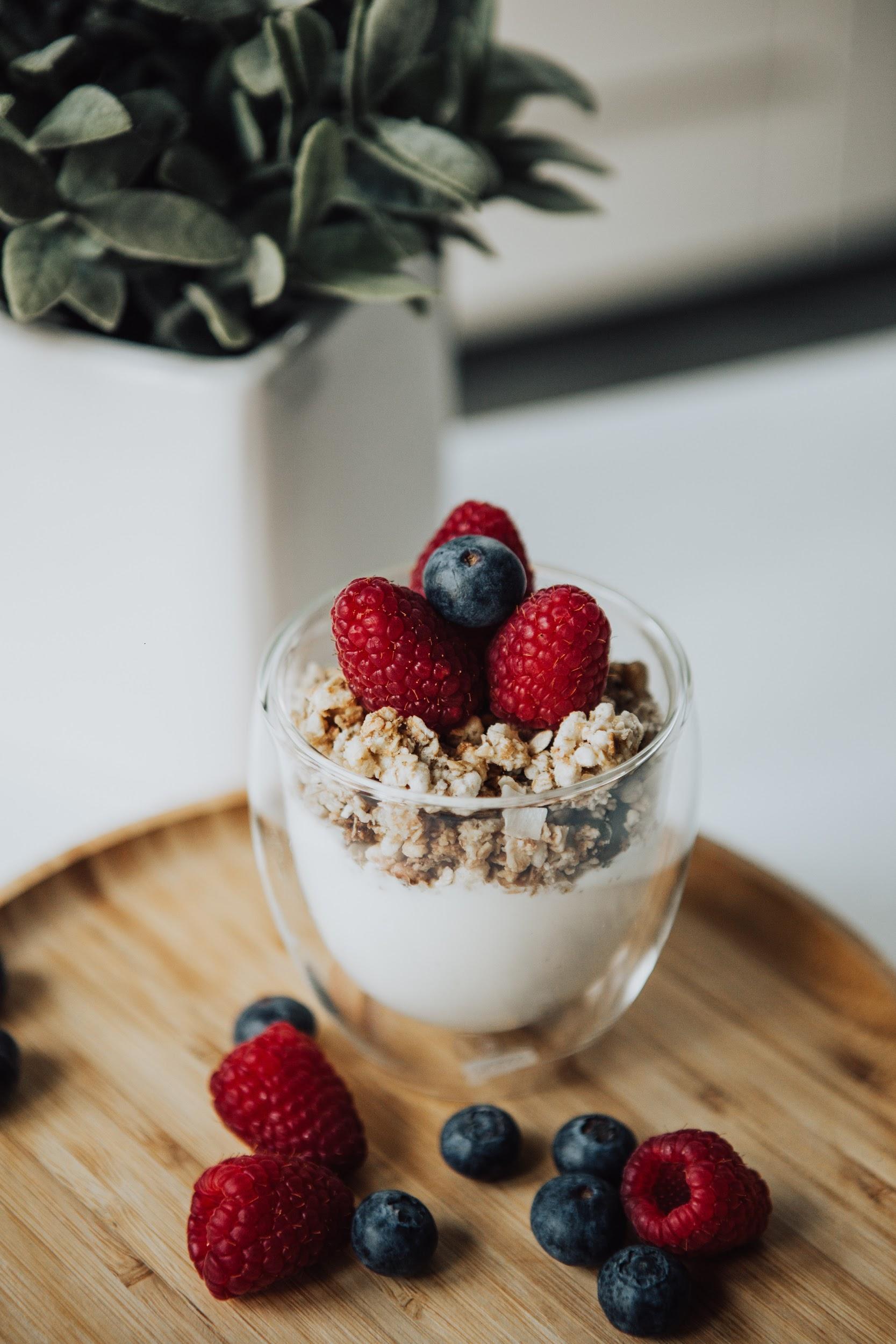
References:
- 1Devi, R. (2005). Food processing and impact on nutrition. Research Scholar, Department of Economics, Kurukshetra University, Kurukshetra, Haryana, India. Retrieved from http://saspjournals.com/wp-content/uploads/2015/08/SJAVS-24A304-311.pdf
- 2National Institutes of Health Office of Dietary Supplements. (February 14, 2020). Vitamin A. Retrieved April 11, 2020, from https://ods.od.nih.gov/factsheets/VitaminA-HealthProfessional/
- 3Vitamin D reference:Linus Pauling Institute-Micronutrient Information Center. (2020). https://lpi.oregonstate.edu/mic/vitamins/vitamin-D
- 4National Institutes of Health Office of Dietary Supplements. (March 6, 2020). Niacin. Retrieved April 11, 2020, from https://ods.od.nih.gov/factsheets/Niacin-HealthProfessional/
- 5Linus Pauling Institute-Micronutrient Information Center. (2020). Vitamin K. https://lpi.oregonstate.edu/mic/vitamins/vitamin-K
- 6Yoshii, K., Hosomi, K., Sawane, K., & Kunisawa, J. (2019). Metabolism of dietary and microbial vitamin B family in the regulation of host immunity. Frontiers in nutrition, 6, 48. https://www.frontiersin.org/articles/10.3389/fnut.2019.00048/full#h4
- 7Gu, Q., & Li, P. (2016). Biosynthesis of vitamins by probiotic bacteria. Probiotics and prebiotics in human nutrition and health. https://www.intechopen.com/books/probiotics-and-prebiotics-in-human-nutrition-and-health/biosynthesis-of-vitamins-by-probiotic-bacteria
- 8Valdes, A. M., Walter, J., Segal, E., & Spector, T. D. (2018). Role of the gut microbiota in nutrition and health. Bmj, 361, k2179. www.bmj.com/content/361/bmj.k2179


